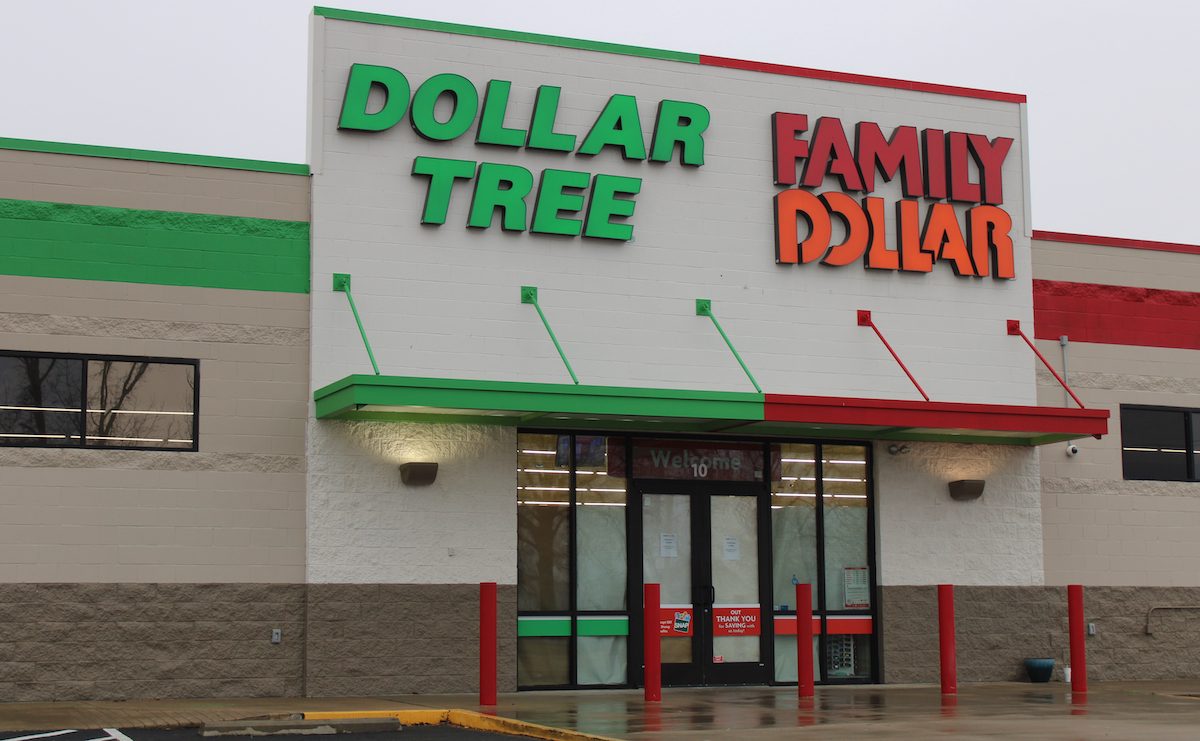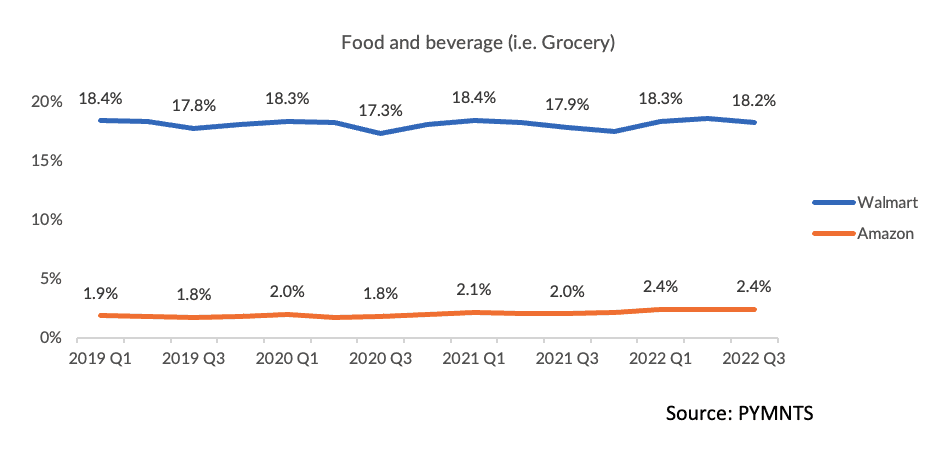Dollar Stores Battle Walmart and Amazon for Grocery Spend

Budget-conscious consumers are eating at home — and Amazon and Walmart may cede grocery ground to the dollar stores.
The key battles may be fought over the pantry staples — the items that are the lion’s share of spend and are essential.
The jousting over grocery spend is heating up. Amazon has been exploring a new brick-and-mortar option through an Amazon Market location. The details are scant at this moment. In the meantime, and as disclosed at the time of earnings, it has been closing some Fresh supermarkets and Go convenience stores. It’s clear that the brick-and-mortar route is still in the crosshairs.
But as CEO Andy Jassy said on the most recent earnings call: “[We don’t] have a big market segment share in perishables, and if you really want to have significant market segment share in perishables, you typically need physical stores.”
The desire to get some traction in perishables would conceivably help nibble — pun intended — at Walmart’s dominance in grocery.
Jousting in the Brick-and-Mortar — and Digital — Aisles
As PYMNTS has estimated, the two commerce juggernauts’ relative share in grocery spend has been stagnant, and Walmart’s roughly 18% share is multiples of Amazon’s.

This comes despite the fact that subscription sales of canned goods and cleaning supplies grew at least 35% in the last three years for Amazon, and 7.2% of consumers buy these items online. Subscribe and Save has helped here. But the online wars have been heating up,too. Amazon said earlier this month that it is raising the amount Prime members must spend to get free grocery delivery.
All the while, food prices are going up, and even if inflation’s growth is tapering, we’re not getting back to where we were any time soon. The Bureau of Labor Statistics reported that the overall cost of food consumed at home is up 10% as of the end of last year versus 2021 levels. Staples such as flour, cereal and eggs are up double digits — the latter is up nearly 60%.
Meats and seafood, per the government data, are up only mid-single-digit percentage points over the same time frame and arguably can be paid for as consumers go — in other words, on a daily, weekly or even by-meal basis — and can be substituted for by other ingredients. Picking up meat and chicken may be less financially taxing than the other items and might conceivably be reserved for traditional grocery settings.
Makes sense, then, that the staples would be where the consumers would be targeting some cost savings and bargain hunting.
While Amazon and Walmart are competing for share, the stage is set for the dollar stores to grab share of these boxed and bulked goods that are proverbially in the center aisle, which can be bought, stored in the pantry and are essential.
In a report that debuted earlier this month from the American Journal of Public Health, dollar stores are the fastest-growing food retailers by share of household food spending. The data showed that dollar stores’ share increased about 90% from 2008 to 2020. Although PYMNTS has found that spending on groceries tops the list of purchases made by households — whether they lived paycheck to paycheck or struggle with paying the bills — just where we get the daily bread may shift a bit, at Amazon and Walmart’s expense.
